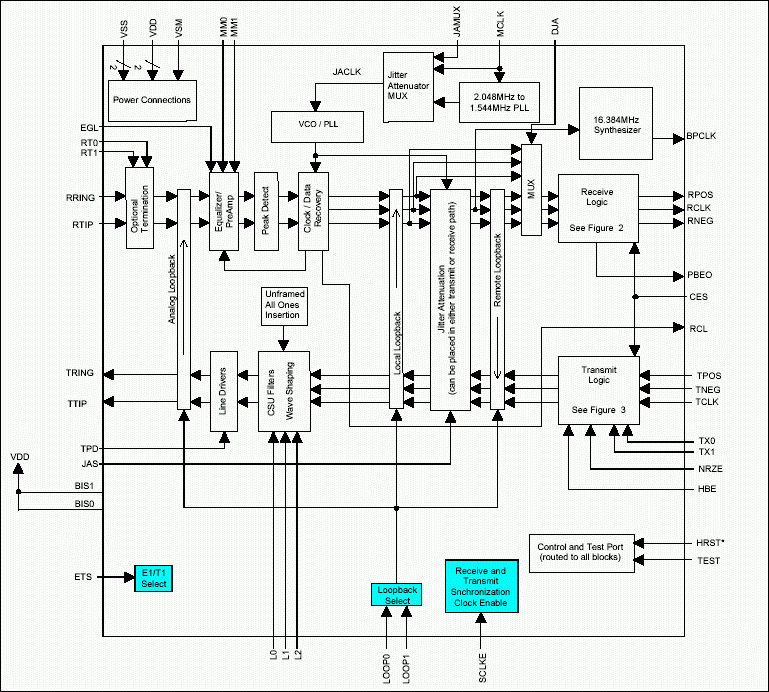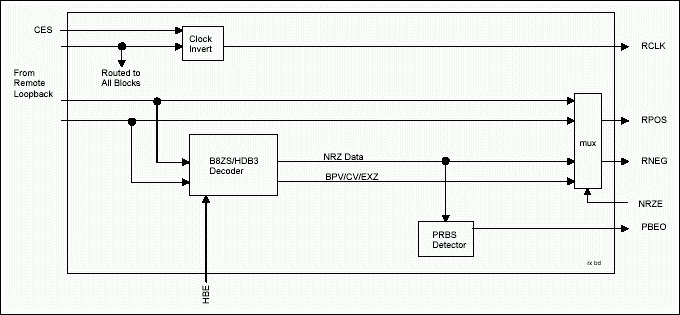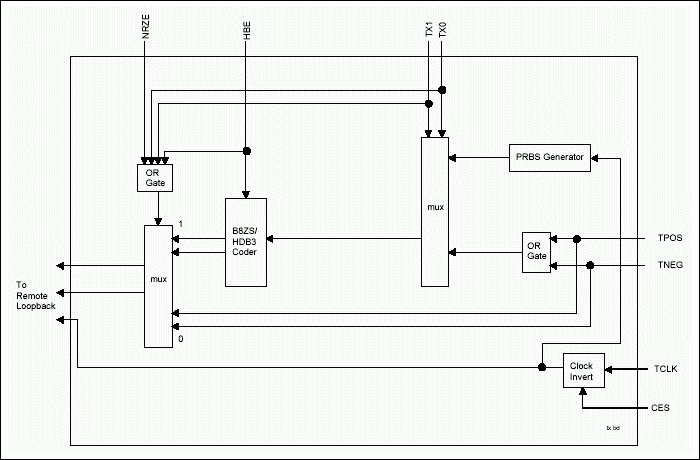

DS2148/DS21348 Hardware Mode
通信设计应用
65人已加入
描述
Abstract: Application Note 407 provides a focused view of the functionality of the Dallas Semiconductor/Maxim DS2148/DS21348 selectable E1 or T1 line interface unit (LIU) in hardware mode along with references to software mode features to aid designers creating applications using hardware mode only. IntroductionThere are two major modes of operation for the DS2148/DS21348: software and hardware mode. The "mode" refers to the method used to control the functionality of the device. Applications implementing software mode use a microcontroller's serial or parallel bus to communicate to the control registers contained in the DS2148/DS21348. In hardware mode, the functions of the serial/parallel communication bus pins are reassigned such that the pins' logic state provide direct control of the internal functionality of the DS2148/DS21348.The DS2148 and DS21348 data sheets contain all the information required to implement the DS2148/DS21348 in designs using a T1 or E1 interface. The data sheets were written with the software mode user in mind and therefore contain information required to set up the DS2148/DS21348 using the control registers and the additional functionality available in software mode that is not available when using hardware mode. This application note provides a focused view of the functionality of the DS2148/DS21348 in hardware mode along with references to software mode features to aid designers creating applications using hardware mode only. Should Hardware Mode Be Used?The advantage of using the DS2148/DS21348 in hardware mode is that no microcontroller is required to control the functionality. Each application has specific requirements that determine whether or not hardware mode can be used. The primary consideration is whether or not any of the features available only in software mode are required in the application. Table 1 provides a list of all the software mode features that are totally eliminated in hardware mode. The register bit position and name is provided to allow ease in referencing the complete description of the functionality contained in the DS2148 and DS21348 data sheets.Hardware Mode ImplementationAll the primary functions that require the ability to change are controlled by external pins in hardware mode. Table 2 provides a reference for the functionality of the software mode bit positions and the corresponding pin that is used in hardware mode to control the DS2148/348.While some software controllable features are unavailable in hardware mode, the DS2148/DS21348 default functionality was carefully chosen to perform as expected in normal applications. Table 3 lists the features and their default operation in hardware mode. A complete description of the hardware mode functionality of each of the pins is provided in Table 4. Figures 1, 2, and 3 provide block diagrams representative of the functionality of the DS2148/DS21348 in hardware mode and are similar to their software mode counterparts in the data sheets. In contrast to the block diagrams provided in the data sheets, the external pins of the DS2148/DS21348 replace references to the control registers. Software-mode-only functions have also been removed. Although most DS2148/DS21348 applications implement software mode, hardware mode remains a viable option for many customers. Using this document along with the DS2148 and DS21348 data sheets provides the information required to get a hardware mode application up and running with minimal time and effort. Table 1. Software mode features eliminated in hardware mode
Table 2. Hardware mode pin control/register reference
Table 3. Hardware mode default functionality
Table 4. Pin descriptions in hardware mode (sorted by pin name, DS2148/348T pin numbering)
 Figure 1. DS2148/DS21348 hardware mode block diagram.  Figure 2. DS2148/DS21348 hardware mode receive logic.  Figure 3. DS2148/DS21348 hardware mode transmit logic.
|
声明:本文内容及配图由入驻作者撰写或者入驻合作网站授权转载。文章观点仅代表作者本人,不代表电子发烧友网立场。文章及其配图仅供工程师学习之用,如有内容侵权或者其他违规问题,请联系本站处理。
举报投诉
-
DS2148、DS21348、DS21Q48、DS21Q348和DS21448的附加脉冲幅度设置2023-02-13 1809
-
DS2148G 接口 - 电信2023-01-30 93
-
DS2148TN+ 接口 - 电信2023-01-14 78
-
DS2148/DS21348硬件模式2023-01-12 851
-
Using DS2148/348 as Repeater2009-04-20 1156
全部0条评论

快来发表一下你的评论吧 !

